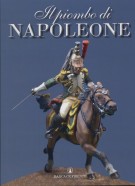The Movado history
| Author(s) | Fritz von Osterhausen | ||
| Editor | Schiffer Publishing Ltd. | Place | U.S.A. |
| Year | 1996 | Pages | 234 |
| Measure | 26X29 (cm) | Illustration | 260 ill. num. a colori e b/n n.t. |
| Binding | ril. in tela con sovracc. ill. a colori e cofanetto in cartoncino | Conservazione | |
| Language | Weight | 2000 (gr) | |
| ISBN | 0764301268 | EAN-13 | 9780764301261 |
not available
Testo in inglese.
In 1881 Achille Ditesheim founded a watchmaking factory in La Chaux-de-Fonds, Switzerland. In 1905 the factory was given the fine-sounding name of Movado, a word taken from the recently developed Esperanto language, its meaning roughly translatable as "always in motion". And this factory boasts a rich history, indeed. Initially specialising in the production of pocket watches, the operation was later expanded to cope with the birth of the wrist watch. Independent developments such as the Polyplan calibre, a form movement for extremely curved rectangular wrist watches, are representative of Movado's inventiveness and constant search for innovative solutions at the beginning of the wrist watch era.
In the 1950's Movado developed its own calibres for the highly popular calendar wrist watches of the day, and in 1969 Movado and Zenith were responsible for introducing to the market the first automatic chronograph with calibre 3019 PHC under the name of El Primero. The fact that, besides paying attention to the technical side of watchmaking, Movado also devoted much care to the aesthetic aspect is reflected in a striking manner by Nathan George Horwitt's dial, later used in the "Museum Watch" and now part of the permanent collection of the Museum of Modern Art, New York.
Recommended books...





